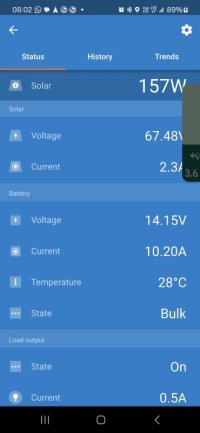Hello.
I just replaced my battery. The previous one failed.
However, with the engine running OBDeleven showed battery voltage 14.4 volts - obviously the alternator charging.
I just coded in the battery, but one I do an OBDeleven scan it showed the battery as on being 12.2 volts, but then more recently 12.5 volts. Is this because the smart alternator doesn't need to charge or should the alternator always charge when the engine is running (thus 14.4)volts and I have a problem?
Also, do batteries normally get delivered fully charged or should I have charged before fitting?
I just replaced my battery. The previous one failed.
However, with the engine running OBDeleven showed battery voltage 14.4 volts - obviously the alternator charging.
I just coded in the battery, but one I do an OBDeleven scan it showed the battery as on being 12.2 volts, but then more recently 12.5 volts. Is this because the smart alternator doesn't need to charge or should the alternator always charge when the engine is running (thus 14.4)volts and I have a problem?
Also, do batteries normally get delivered fully charged or should I have charged before fitting?

